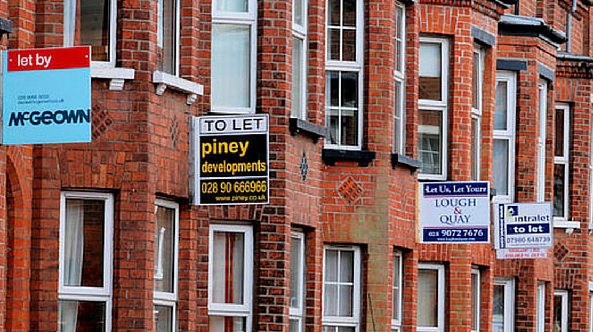Savills has predicted strong growth in the UK housing market throughout the coming years, especially in the north and Midlands. Here’s what could happen to house prices in the short- and long-term.
National estate agency Savills published its annual comprehensive five-year housing market predictions. The new upgraded forecasts come after an unexpectedly resilient and strong performance throughout 2020.
Moving forward, there are a number of factors affecting the housing market. This includes the speed of the UK’s economic recovery and levels of unemployment and income growth. The easing of social distancing measures and lockdown restrictions and the vaccination program could boost buyer sentiment. And continued government support will likely further help the sector in the short-term.
Interest rates are another factor impacting the housing market. Lower mortgage interest rates have made borrowing more affordable for homebuyers and property investors. Currently, the Bank of England base rate sits at the record low of 0.1%. According to Savills, this will remain the case until 2024.
Housing market conditions for 2021
In 2020, UK house price growth increased by an average of 7.3%, despite the economy contracting by -10%. People’s desire to move and the stamp duty holiday outweighed the uncertainty surrounding finances and jobs.
Savills has revised the predicted UK house price growth for 2021 from 0% to 4%. Many are suggesting the housing market will remain strong throughout the first half of the year. And the Spring Budget has provided a further boost to the sector.
The stamp duty holiday extension and tapering end is expected to prolong a period of robust activity in England and Northern Ireland. With the mortgage guarantee scheme, this could bring a broader range of buyers into the sector. The housing market will likely remain busy in the coming months. However, Savills expects the market to start cooling down later in the year.
Lucian Cook, head of residential research at Savills, states: “2021 is going to be a complex and uneven year, with competing forces impacting the housing market at different points.
“But the outlook has improved since the beginning of the year given the speed of the vaccination programme, the expected relaxation of social distancing measures and government support for both jobs and the housing market.”
UK house price growth in the years to come
Stronger house price growth will likely return to the sector in 2022. There is expected to be a period of sustained economic growth, and unemployment is projected to fall by the end of this year. In 2022, Savills forecasts prices to increase by 5% across the UK.
House price growth is then predicted to ease in the next few years as the rate of economic growth will likely reduce. UK house prices are projected to increase by 4%, 3.5% and 3% in the next three years. Over the five years to 2025, the national estate agency forecasts prices to rise by 21.1%.
Lucian Cook says: “Our analysis suggests average UK price growth of 20% is sustainable over the next five years without unduly depleting mortgage affordability.”
Strong regional growth in the coming years
Savills believes London, the south-east and the east will lead house price growth in 2021. After that, the estate agency forecasts stronger growth in areas further from the capital. This will be in markets that are home to lower house price to household income ratios, leaving more room for house price growth.
In 2022, the north-west of England and Yorkshire and the Humber is forecast to lead the way with 6% house price growth. Savills also predicts these two regions to see house prices increase by 5.5% and 5% respectively in 2023. Then, prices are likely to rise by another 4.5% in both regions in 2024.
The largest increase expected to be seen during the five years to 2025 is in the north-west, with a 28.8% rise. Yorkshire and the Humber follows closely behind with a projection of 28.2%. Then, the national estate agency forecasts the East and West Midlands to both see 24% increases.
With major investment in infrastructure coming to towns and cities in the north and Midlands, this will likely bring further growth to these areas. “The Government’s levelling-up agenda is likely to support the patterns of regional price growth we would normally expect at this point in the cycle,” Lucian Cook comments.
Overall, the the COVID-19 pandemic has certainly changed the landscape for many sectors. However, at least for the short-term, the UK housing market continues to show resilience. And the sector is set for sustainable growth in the coming years. Regional parts of the north and Midlands will likely continue to see the strongest growth.










